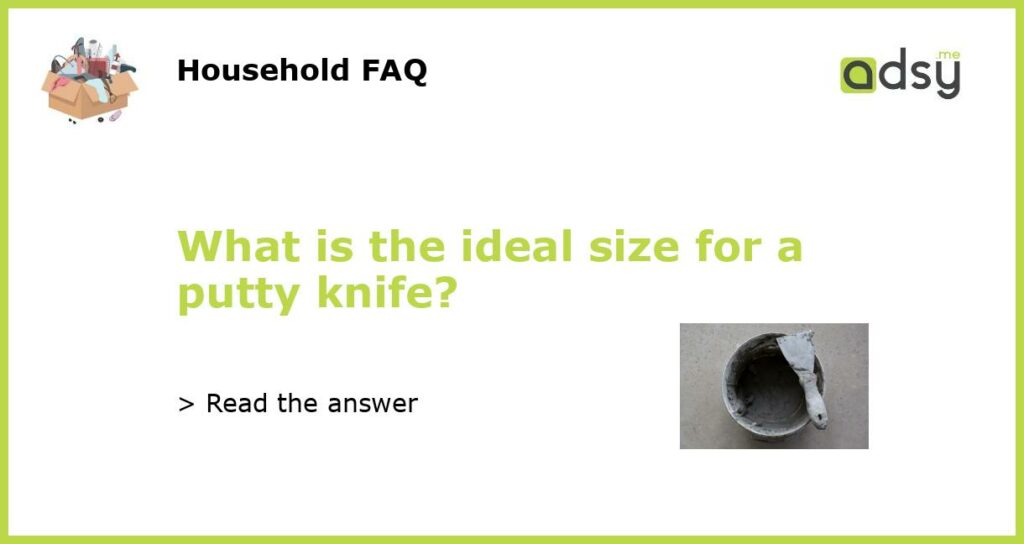Understanding Putty Knives
A putty knife is a tool used for a variety of purposes, but mostly for applying putty, filling nail holes, and scraping old paint. It is an essential tool for anyone who works with wood, metal or even drywall. But one question that often arises is – what is the ideal size for a putty knife?
Why Size Matters for Putty Knives
The size of a putty knife determines the amount of material it can hold and how much it can spread. The blade thickness and width are significant factors that affect the tool’s ability to apply putty and fill gaps. A larger size can cover more surface area and can work faster, but a smaller size is better at detailed work and accessing tight spaces. It is essential to choose the right size putty knife for the job to get the best results.
Choosing the Right Size Putty Knife
When it comes to putty knives, there is no one-size-fits-all solution. The ideal size for a putty knife depends on the specific project requirements. A general rule of thumb is to choose a putty knife that is one inch wider than the gap you need to fill. For example, if the gap is 2 inches wide, you should choose a 3-inch putty knife. For smaller gaps, such as nail holes, a smaller putty knife such as a 1-inch or 1.5-inch blade may be more appropriate.
Other Factors to Consider
In addition to the blade size, there are other factors that you need to consider when choosing a putty knife. The blade material is essential, as it determines how well the knife can scrape and spread putty. Stainless steel blades are very durable and rust-resistant, making them a good choice for many applications. Carbon steel blades are more flexible, making them better for scraping and smoothing, but they also need to be treated to prevent rusting. The handle is also important, as a comfortable grip can make all the difference when working on a large project for an extended period.
The ideal size for a putty knife depends on the job’s specific requirements, and there is no one-size-fits-all solution. However, choosing a putty knife that is one inch wider than the gap you need to fill is a good rule of thumb. Other factors to consider when selecting a putty knife include the blade material and handle design. By choosing the right putty knife, you can achieve a professional-looking finish on all of your woodworking and DIY projects.






